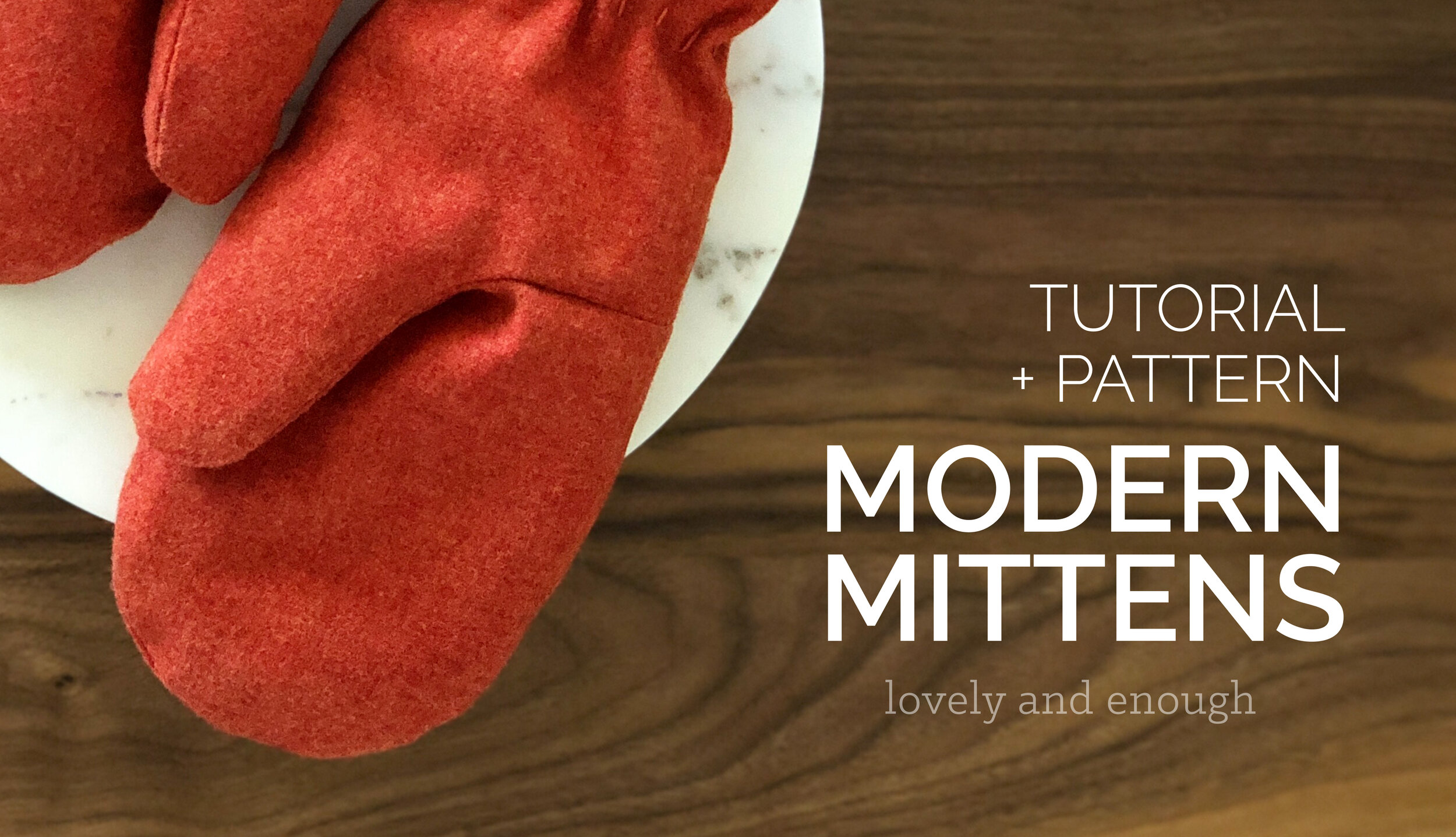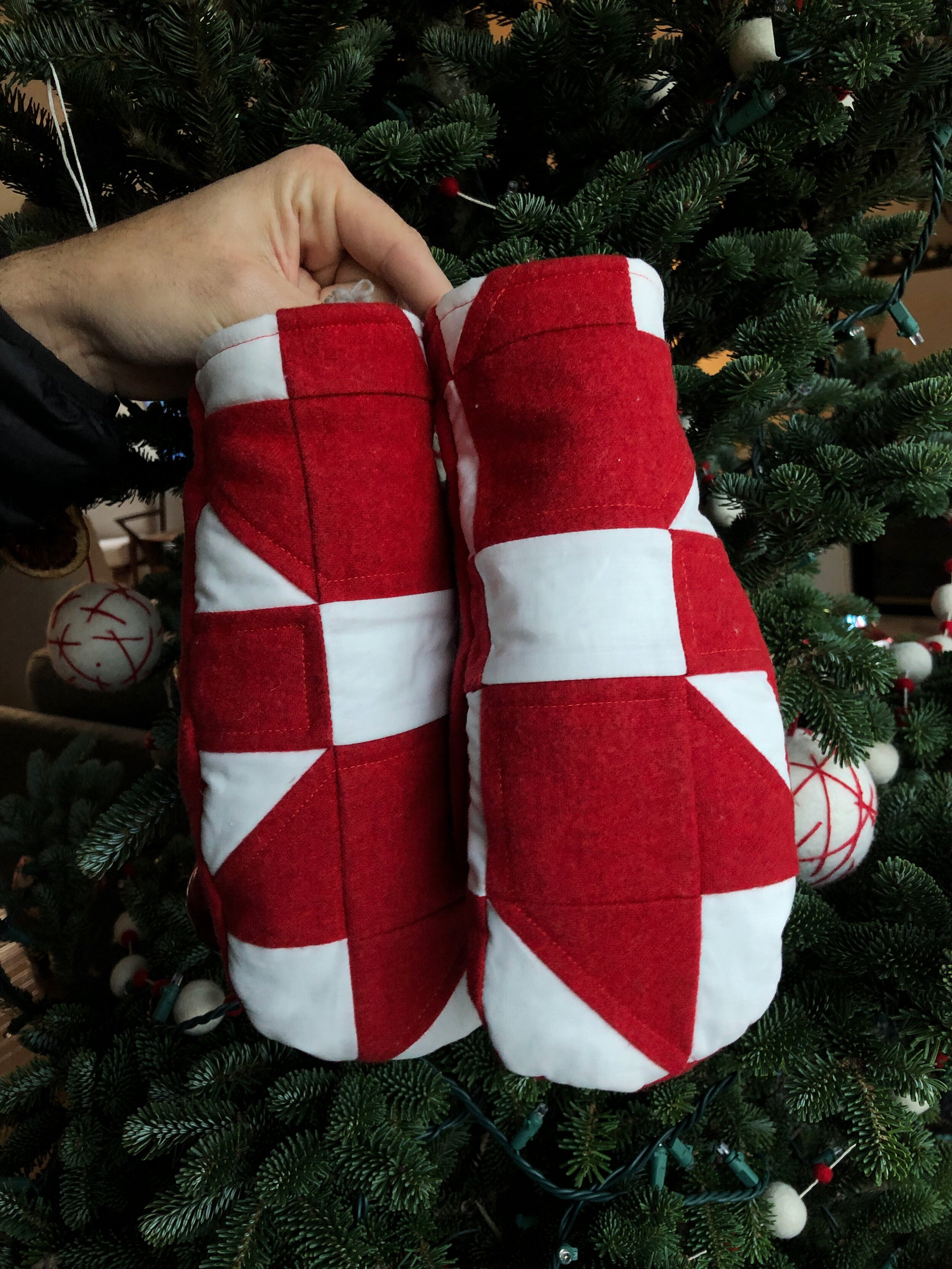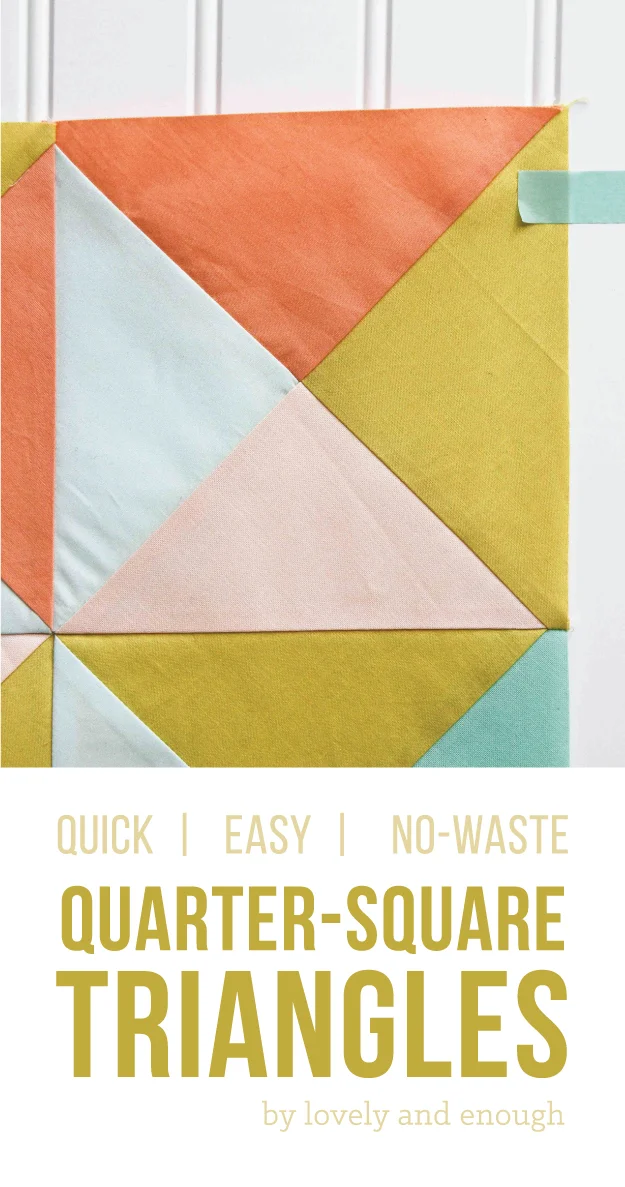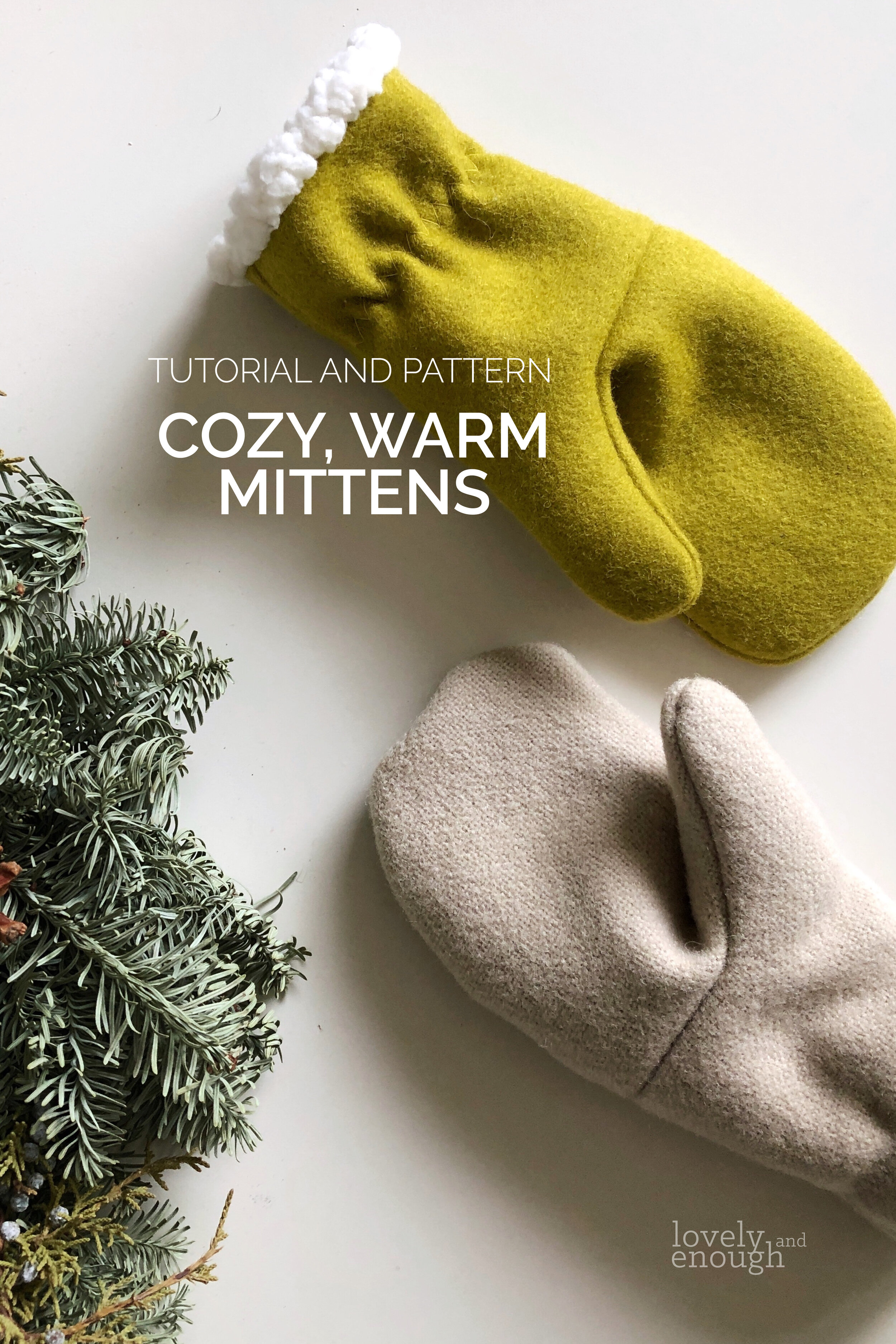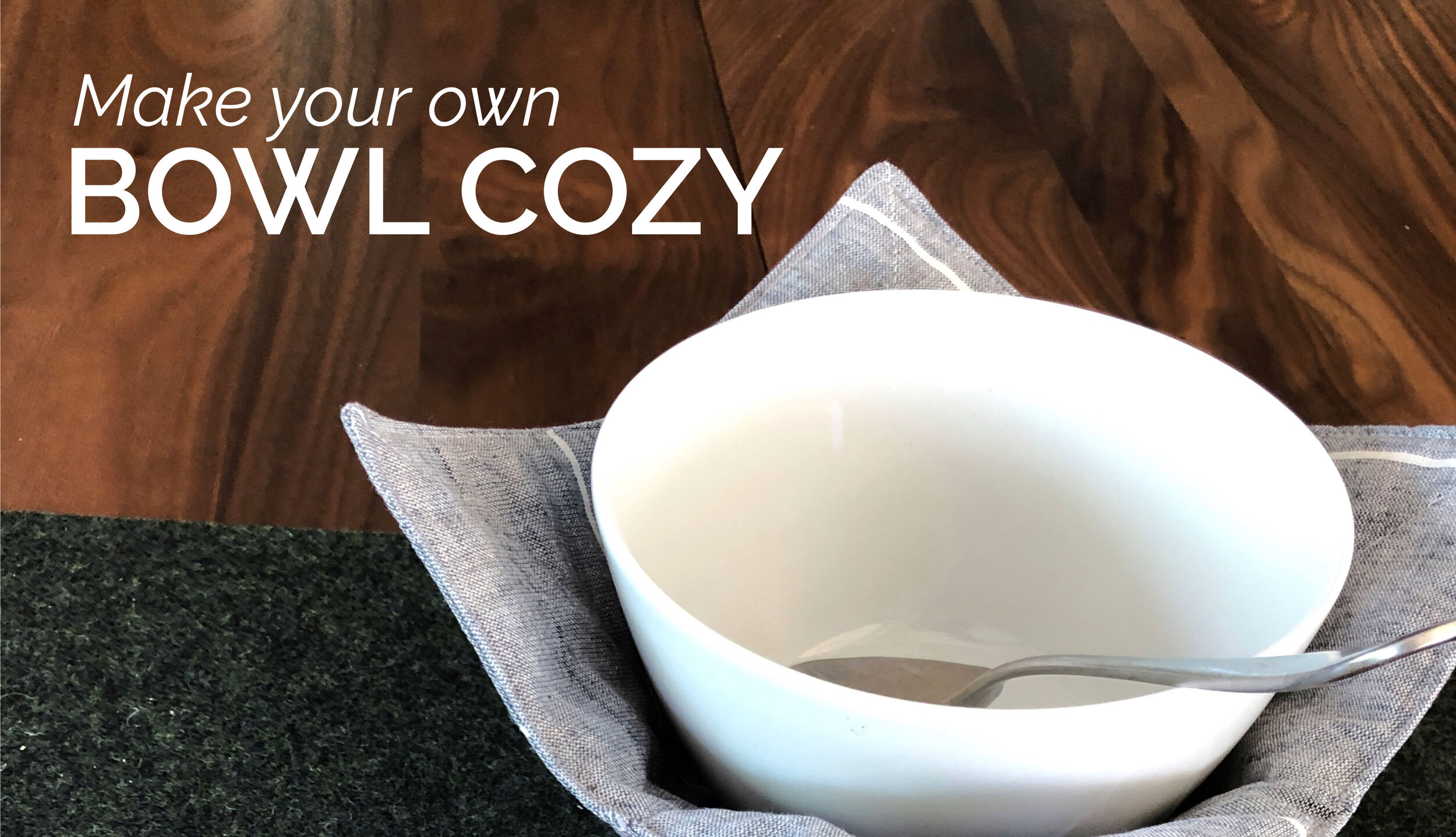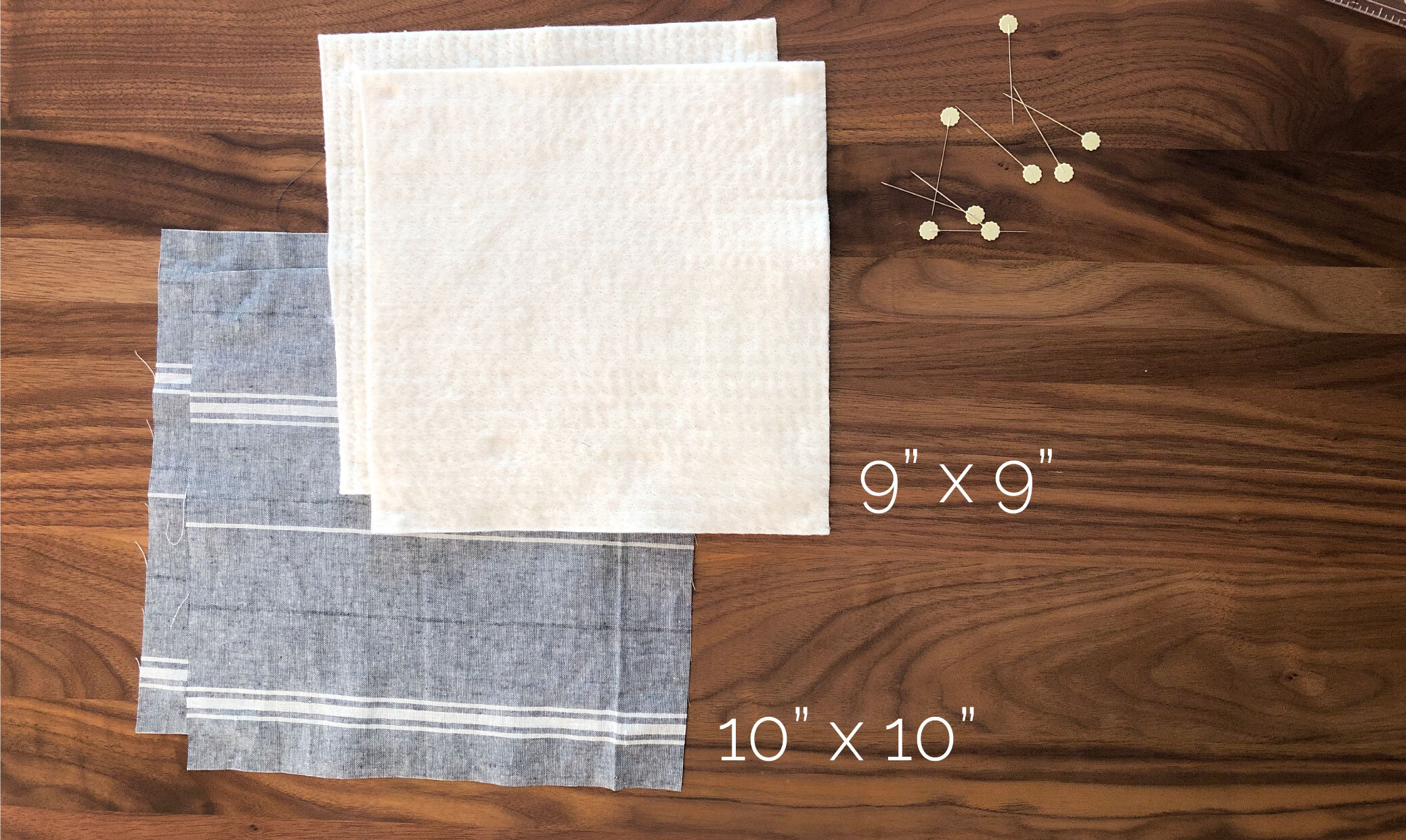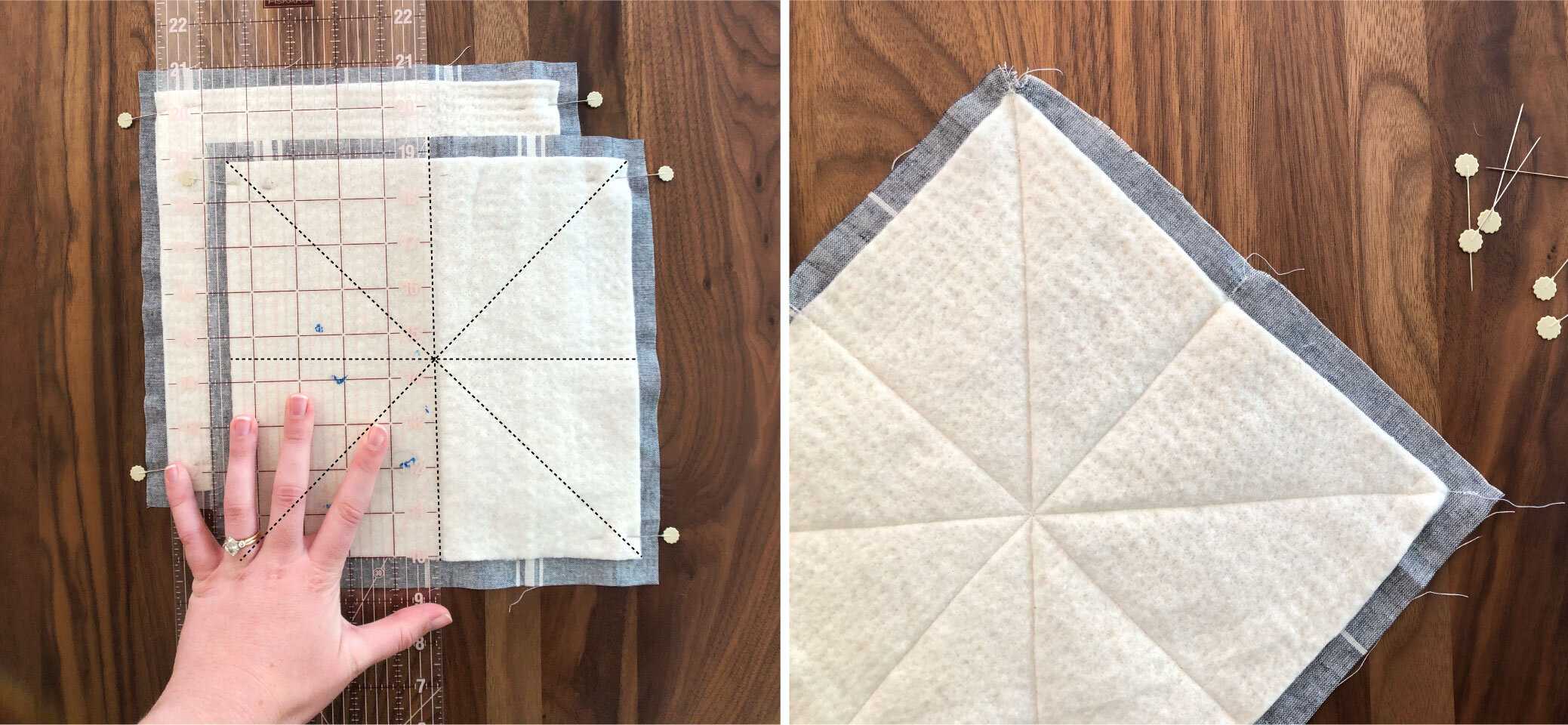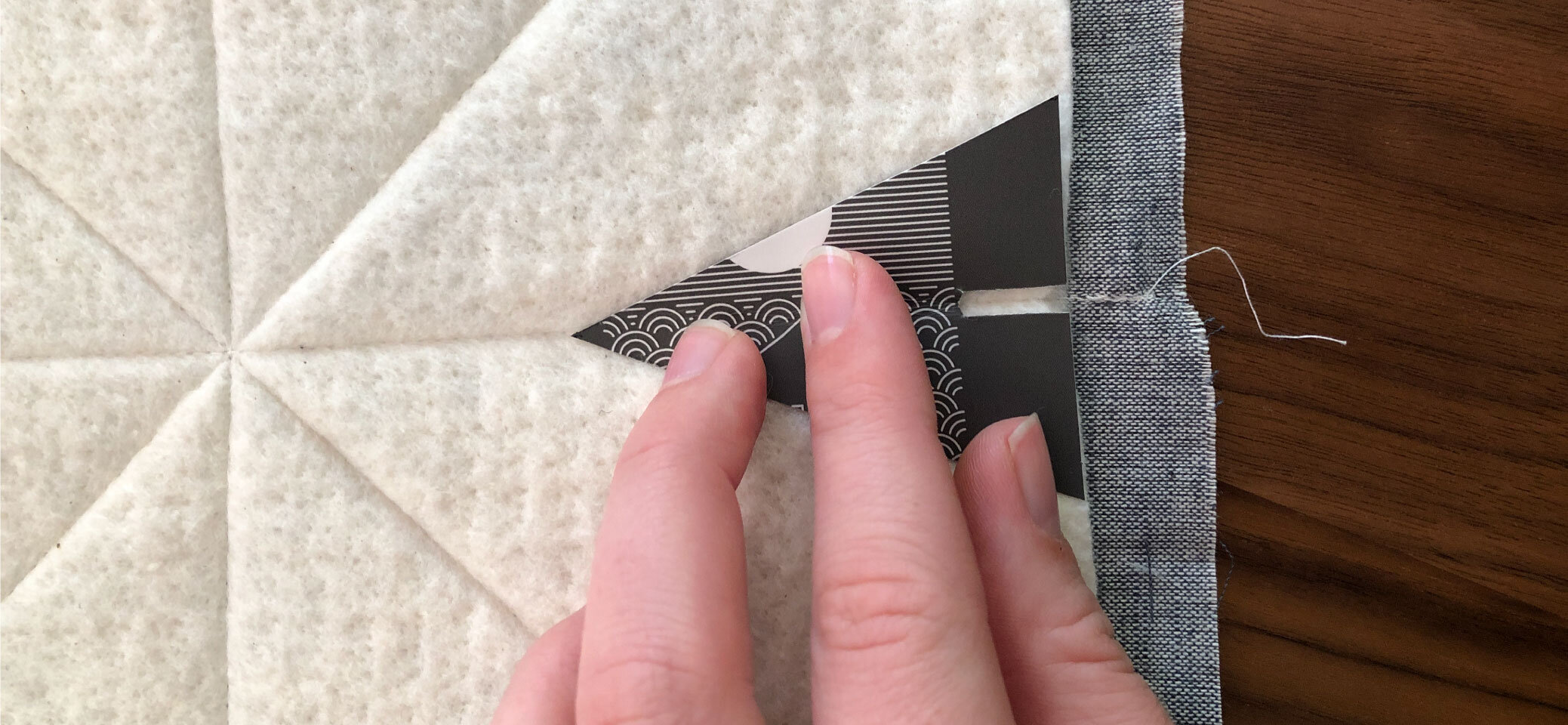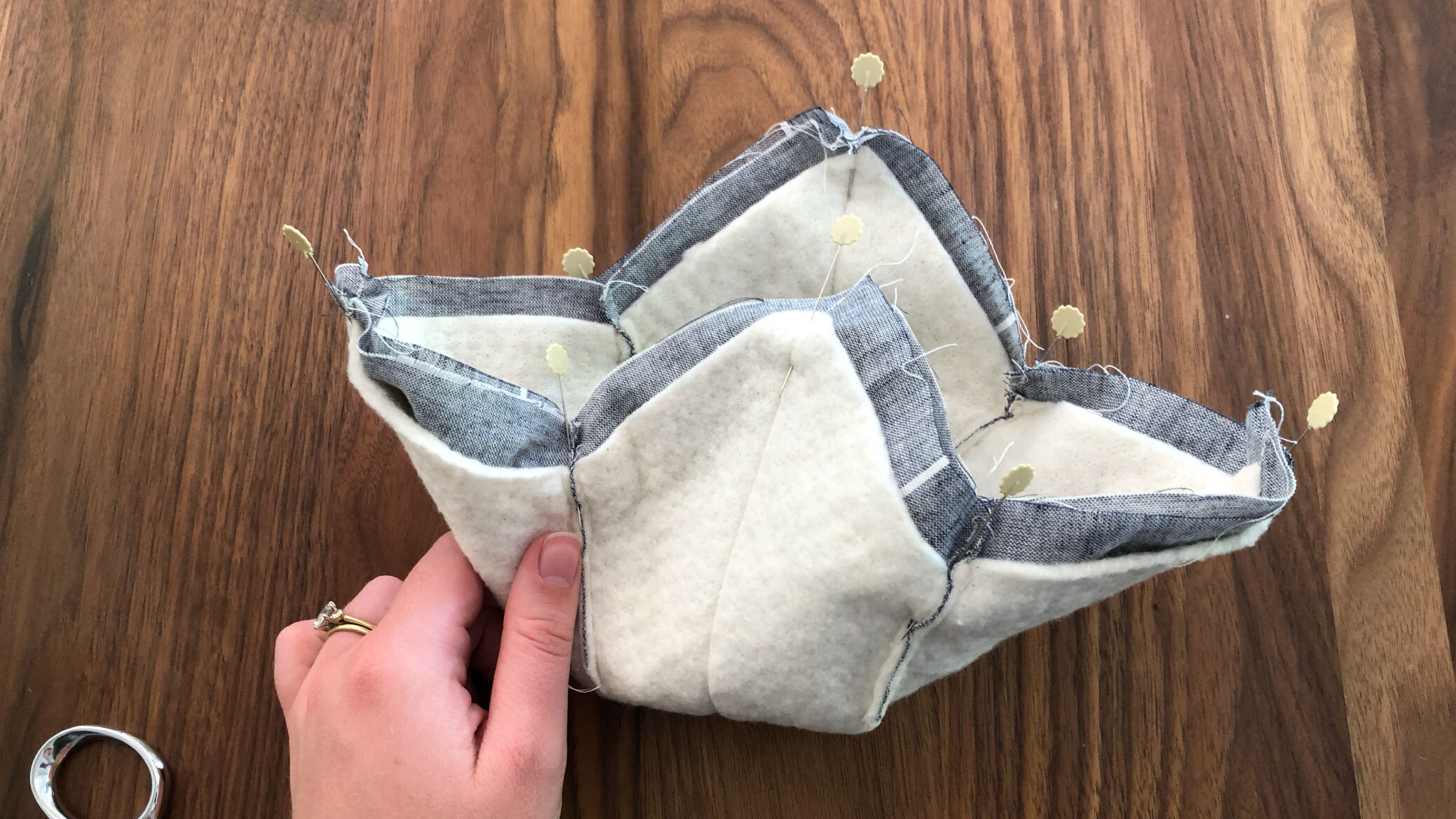Sew a pair of warm, cozy mittens for you or for a gift.
Are you looking for a last-minute handmade gift for a friend or family member? Perhaps you would like to get ahead on Christmas gifts this year? You have come to the right place. Mittens are the perfect gift for anyone living in less than balmy climes: great for your parents’ aging hands, your teenager headed back to college, your trendy friend living in snowy New York City, or your friend tending chickens in freezing rural Saskatchewan. Warm and cozy with a simple silhouette, these mittens will look like a pair of bespoke mittens bought from an artisan market. Your giftee will be tickled and overjoyed.
Versatile mitten sewing pattern
Flexible to be sewn with new, scrap, or thrifted fabrics, this mitten pattern also includes alternates to accommodate preferences for finishing your mittens by hand or by machine.
Check out #LovelyEnoughMittens on Instagram to see examples of the beautiful and varied mittens people are making with the pattern.
Download your pattern and start making mittens for you and your loved ones today!
Materials for Sewing Mittens
(for a pair of mittens, any size)
– my downloadable mitten pattern
– mitten fabric, ⅓ yd (wool suggested, woven or knit)
– batting, ⅓ yd (optional, cotton or wool)
– lining, ⅓ yd (any soft woven or knit)
– elastic, 8” (¼” – ¾” wide)
– embroidery floss and needle, if you choose to attach elastic and finish wrist by hand
Skill Level – Advanced Beginner
Make Mittens from Old Sweaters
Have you wandered through a craft fair and coveted the cozy patchwork mittens made out of old sweaters, only to flip over the price tag and experience sticker shock? Well, here’s your chance to make your own pair for a fraction of the cost. Swing by your local thrift store or pull an old sweater out of your closet that you never wear and get to work making your very own sweater mittens.
Sizing your sweater mittens
The stretchiness of the sweater will provide a more pliable mitten. This might feel looser than a mitten of the same size made out of woven fabrics. Thus, even if you are using a bulky lining fabric, like minky or sherpa, you probably don’t need to size up like you would otherwise.
That said, if you use a layer of batting, this will remove all stretch again, so plan accordingly. Adding a layer of batting can be nice to keep your hands warmer, especially if the sweater has a loose weave that could let through wind and cold drafts.
Felt your sweater before making
Another option for looser weave sweaters is felting. The easiest way to go about this is to wash your wool sweater in hot water and dry on high. The felting process makes the wool fibers open up (when hot) and then close around each other as they cool, creating a denser fabric. Take note that this will shrink your sweater and could affect whether you have enough material for your mittens. Check out this post at Instructables for more on felting sweaters.
Perfect Scrap Buster
This mitten pattern is a perfect scrap buster. The pieces can quite easily be cut out of scrap fabric from another garment project. Leanne of The Bristol Stitchery whipped up a beautiful pair of mittens from her garment sewing scraps. She used waterproof fabric for the exterior and double-lined them to make an ultra-warm and weatherproof pair of mittens. You can check them out and ask her more questions on her Instagram.
Beautiful mittens made using scraps from other garment projects. Mittens and image by Leanne of The Bristol Stitchery.
Quilt Mittens
Have you been ogling those quilt coats that are all the rage? Well, take it a step at a time and start with some quilt mittens! My mitten pattern is easily adapted to using a quilt block for the back of the hands. Check out the mitten below made with a Christmas Joy Quilt block.
You can find more quilt mitten inspiration on my Quilt Mittens post, as well as a free tutorial for pattern hacking my mitten pattern to make quilt mittens on Lo & Behold Stitchery.
Tips for Sewing Your Mittens
As I have sewed mittens and experimented with the pattern, I have developed a few tips for success.
Tip 1: How to secure a long zigzag stitch in the seam allowance
Use a very wide and long zigzag stitch, as this helps to maintain the elasticity. However, using a very long zigzag stitch makes it tough to reverse at the start and the stop of the seam inside of the seam allowance. To remedy this, I came up with a little trick.
In order to squeeze reversing a long zig-zag stitch into the seam allowance, start with your machine set to a very very short, wide stitch. Sew a handful of stitches in the seam allowance, reversing. Then lengthen the stitch to sew across the wrist, without cutting the thread. Finish the seam by shortening the stitch again and reversing in the seam allowance.
Tip 2: How to create a neat, secure seam at the base of the thumb
Start by pinning the thumb to the thumb-palm seam so that you don’t accidentally sew it into the edge seam. A binding clip or straight pin is perfect for this job. In order to more easily stitch these seams open, wait to trim the thumb seam until after you have attached the front of the mitten to the back. Lastly, make sure to reverse when crossing the junction at the base of the thumb. This is a seam that will take a lot of strain during wear and benefits from the extra reinforcement
Tip 3: How to keep the wrist elastic taut while hand sewing
Cut a piece of cardboard to slide inside the wrist to keep the wrist elastic taut while hand sewing. The size of the cardboard will depend on the size mitten you are making. It should be about 3–4” long. The widths are as follows: small–4”, medium–4½”, large–5 ⅛”. I also like to put a piece of painter’s tape on the edges to keep it from snagging the batting.
Slide the cardboard inside the wrist, and use a binding clip to secure the elastic at either end of the cardboard. Voila, you are ready to hand tack the elastic!
Tip 4: How to avoid fluffy linings poking through blanket stitches
I found that when blanket stitching my wrist edges that if my stitches were initiated from the inside of the mitten, then I would inevitably pull fluffy white Sherpa tufts through with each stitch. This left me with a finished edge that didn’t look as neat as I wanted. To avoid this, sew the blanket stitch by pushing needle from the outside of the mitten to the inside as this avoids pushing fuzzy lining through to the outside with each stitch.
In the picture below, the top mitten was stitched from the outside and the bottom mitten was stitched from the inside. I know it’s subtle, but the white fluff balls at the base of each blanket stitch are more visible in person.
Share Pictures of your Handmade Mittens
I would love to see what you make, so tag your pictures on Instagram with #LovelyEnoughMittens. Can’t wait to see the mittens you create! Stay warm and cozy.

